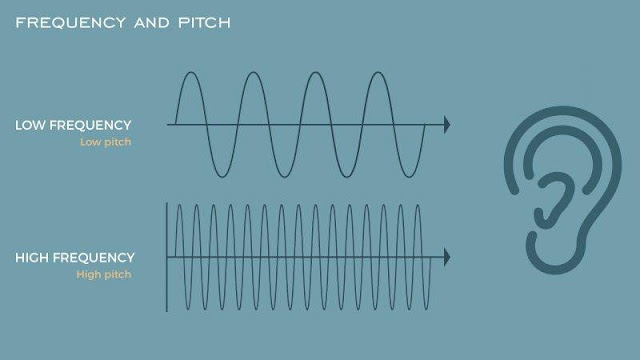Tone and frequency

A sound wave, like another wave, is brought right into a medium using a
vibrating object. The vibrating item is the source of the disturbance
transferring through the medium. The vibrating thing developing the irritation
maybe someone's vocal cords, the vibrating string and soundboard of a guitar or
violin, the vibrating tines of a tuning fork, or the vibrating diaphragm of a
radio speaker. Whatever vibrating object creates the sound wave, the debris
within the medium through which the proper travels vibrates from side to side
at a particular frequency. The frequency of a wave refers to the frequency at
which the debris within the medium vibrates while a wave passes through the
medium. The frequency of a wave is measured because of the wide variety of whole-round
experience vibrations of a particle of the medium consistent with a unit of
time. If an air particle studies 1,000 longitudinal vibrations in 2 seconds, the
wave's frequency could be 500 vibrations per 2d. A typically used unit of
frequency is the Hertz (abbreviated as Hz), in which.
1 Hertz = 1 vibration/2nd
When a valid wave travels via a medium, each particle within the medium vibrates at the same frequency. This is top-notch because each particle
vibrates due to the movement of its nearest neighbor. The first particle inside
the medium begins to shake, for example, at 500 Hz and begins to set the second
one particle in vibratory motion at the identical frequency of 500 Hz. The
second particle starts offevolved to vibrate at 500 Hz, and for that reason,
units the 0.33 particle of the medium in vibratory motion at 500 Hz. The system
keeps for the duration of the guide; every particle vibrates at an identical
frequency. And of a path, the frequency at which every particle vibrates is the
same as the frequency of the authentic source of the sound wave. Subsequently,
a guitar string vibrating at 500 Hz will purpose air particles inside the room
to vibrate at the identical 500 Hz frequency, which transmits a legitimate
signal to the listener's ear, which is detected as a sound wave of 500hz.The to-and-fro vibratory movement of the particles within the medium might no longer be the most effective observable phenomenon at a given frequency. Since a valid wave is a stress wave, a detector could hit upon strain modifications from high to low pressure and again to high pressure. As compressions (excessive stress) and rarefactions (low pressure) pass via the medium, they could arrive on the detector at a particular frequency. For example, a compression would hit the sensor 500 instances in step 2d if the wave frequency has been 500 Hz. Similarly, a rarefaction would hit the detector 500 samples per 2d if the wave frequency has been 500 Hz. Sound now refers back to the variety of round ride vibrations of particles per unit of time and to the range of compressions or rarefactions that skip through a given point consistent with unit time. A detector can discover the frequency of these strain oscillations over a given period. The standard output supplied by this sort of detector is a strain-time graph, as proven below.
Since a pressure-time graph suggests fluctuations in stress through the years, the duration of the sound wave can be determined by measuring the time among successive factors of excessive pressure (corresponding to compressions) or the time among straight factors of high pressure. Low stress (similar to rarefactions). As mentioned in a preceding unit, frequency is virtually the reciprocal of duration. For this reason, a high-frequency sound wave could correspond to a pressure time graph with a short period, a diagram corresponding to a small amount of time between successive high-pressure points. In contrast, a low-frequency sound wave would correspond to a long-duration pressure-time plot, similar to a significant amount of time between straight high-stress points. The following diagram suggests pressure-time graphs, one similar to a high frequency and the alternative to a low frequency.

